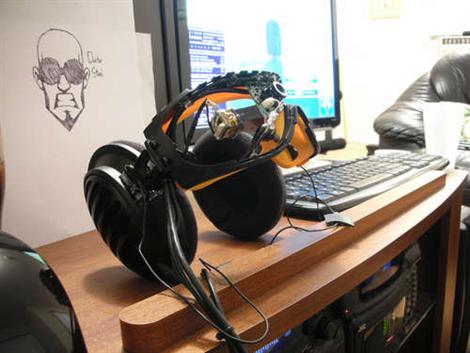
[Banfield Design] has put together this instructable on how to upgrade or re build a head mounted display to be more immersive and add features. Though you can already buy glasses style viewers for your media devices, they can use some upgrades. For one, you have to supply your own sound, and putting headphones on, over bulky glasses can be painful on your ears. Another area that could use improvement is the light that comes in around the glasses. The current trend is to make them as small as possible, but that tends to let your peripheral vision see the outside world. [Banfield design] wanted to make them more immersive, so he built them into some ski goggles. This not only helped block the light, but allowed for an over the ear style headphone assembly which is much easier on the ears.
A functional improvement came next, by adding a webcam front and center. He could now switch between a live feed of his environment and whatever other inputs he wanted. This could be really fun with some augmented reality. He has a list of future improvements, but he doesn’t mention adding a second camera for stereoscopic viewing of his surroundings. Why would you do that? because it would make augmented reality much cooler.















